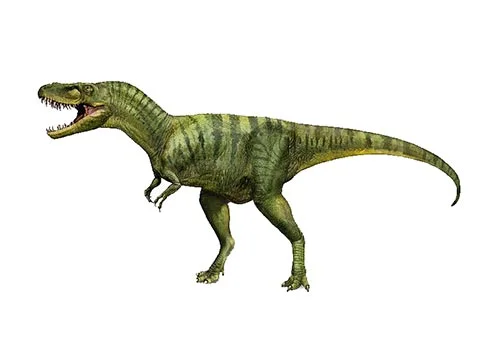Albertosaurus (Alberta lizard)

Al-ber-to-sore-us
Henry Fairfield Osborn - 1905
Carnivore
Estimated up to 10 meters long
Large Theropod
A. sarcpohagus (type)
Canada. USA
Late Cretaceous, 76-74 million years ago
Albertosaurus Facts
Albertosaurus (/ael,be:rt@’so:r@s/; meaning “Alberta lizard”) is a genus of tyrannosaurid theropod dinosaurs that lived in western North America during the Late Cretaceous Period, about 70 million years ago.
The most common species, A. sarcophagus, was thought to be restricted to the present-day Canadian Province of Alberta, but an undetermined kind of species (“cf. Albertosaurus sp.”) was discovered inside the Corral de Enmedio and Packard Formations in Mexico.
Scientists are divided on the nature of the Genus, but some recognize Gorgosaurus libratus as an additional species. Albertosaurus was an animal that was bipedal with small, two-finger hands and a head with a multitude of sharp, large teeth.
It was probably on the highest level in the chain of food within the local ecosystem and was considerably smaller than its bigger and more well-known relative Tyrannosaurus Rex, which was able to grow from 8-10 m (26-33 feet) and perhaps having a weight of 2.5 tons (2.8 small ton) (or less). Since the discovery of the first of 1884 fossils from over 30 people, more in-depth knowledge of Albertosaurus anatomy has been found, allowing for studies of ontogeny and population biology.
Albertosaurus was a tyrannosaurid with an identical body type to the other Tyrannosaurids. It was bipedal and balanced its heavy body with the long tail. Multiple mass estimates from various methods indicate the adult Albertosaurus weighs between 1.3 to 2.5 tons (1.4 as well as 2.8 small tons).
In 2016, Molina-Perez and Larramendi determined the biggest species (CMN 5600) at 9.7 meters (32 feet) with a weight of 4 tonnes (4.4 shorter tons). Two skin impressions of Albertosaurus are documented with both showing scales and two more feature scalesthat are placed 4.5 cm apart from one the other. The scales are tiny diamond-shaped and arranged in rows.



